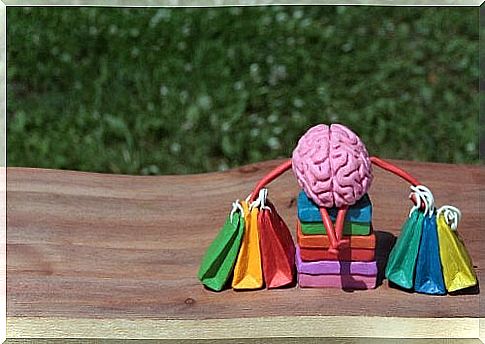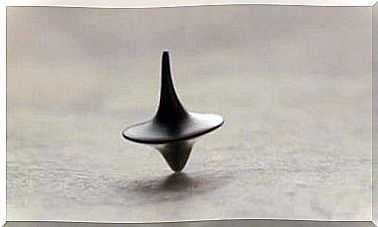5 Psychological Keys Used In Marketing

To buy or not to buy, that is the question. But the big brands can’t leave that much leeway, and that’s why they hire specialists who know the psychological keys to marketing. A successful company doesn’t leave these variables to chance. In other words, everything that is implemented in a marketing campaign is designed so that the consumer will ultimately want to buy the product advertised by marketers.
But for that to be the case, they have to know what he wants, what he needs and how he would like it. For this reason , they study their consumers in order to apply psychological insights in the field of marketing and to be able to make the most of their influence on the consumer.
The psychological keys used in marketing
The impulse is very important in the buying process. In this context, a study published by Chase, Gallup and Harris Interactive defines a number of psychological keys that are used in the field of marketing. On this basis, it should be possible for the large advertisers to stimulate the buying impulse in us.
Our brain integrates memories and current stimuli to make impulsive decisions. For this reason, either because we have planned it or we feel prompted to do so at a certain moment, an occasion arises for us to buy something. We get calls to buy from all sides: “Get it now”, “Don’t miss this”, “Subscribe today” … Do you think this was all a coincidence?
Various studies on psychomarketing and neuromarketing show that our instinctive requirements are very important when the brain searches for reasons to choose one or the other option. Put another way, our instincts matter a lot in this area. And the experts know that. So they play with our fear of “missing out on a good opportunity”. For example, we wake up when we are told that there are only a few pieces left of a product.
Advertisers large and small try to get the consumer to think as little as possible – the less they think the better – in order to get their campaigns rolling or to showcase a particular product. They know that our emotions play an important role in most of our decisions, so we tend to block ourselves and not make up our minds when acting out of reason.

The use of images
Few advertising campaigns forego the visual aspect, because our brain processes a photo much faster than a text. Therefore, the visible impression during the buying process is of particular importance.
A good quality photo is an especially good ally in advertising. That is why a strong visual impact is always sought when selling a certain product or service. So whoever takes up this offer will be more satisfied, more successful, more elegant, more unique. He will be better than his previous self.
Colors and their effect
Do you think the colors used in marketing campaigns are chosen randomly, or just because they’re pretty to look at? The truth is there is a lot more to it than that. Various studies show us which shades are best suited to achieve this or that result.
Have you ever noticed that the logos of many platforms such as Twitter, Facebook, PayPal or Microsoft contain the color blue? Obviously this is not a coincidence. According to studies on color psychology, this color gives us confidence and inspires consumers to use it, as it implies a place where they can feel safe. Therefore, companies like to take advantage of the color blue when they are in the process of designing their advertising strategy. As we said earlier, this is not just a coincidence. It has to do with culture, with our experiences and with the merging of these two elements.
The first is always the most important
One of the strategies of psychomarketing may be to gradually increase the cost of a service. The point is, the increase cannot be so great that the consumer suddenly sees this product as negligible, nor so high that they look to the market for other options. In other cases, the costs are shared: Perhaps a service costs us € 100, but maybe it seems cheaper to us because we have already paid € 90 and now only put € 10 on the table.
Once you’ve made up your mind, it’s more likely that you will buy a particular product again in the future. Many of the big brands are therefore looking for that first yes, a fantastic option to gradually offer you more content until you finally decide to consume a wide range of products. This is why so much time and money is invested in building consumer trust. This is also known as inbound marketing.
“Strive to win a customer, not a sales success.”
Katherine Barchetti

Anchoring effect
Although we may see a wide variety of a particular product, we usually use the first as a reference for any subsequent ones that are, for example, more expensive or cheaper than the first. So different vendors start out by describing all the options we have in their catalogs – starting with the most expensive one. The following appear to us as bargains.
In connection with the anchoring effect, one also wants to attract our attention. This is because our memories tend to remember the first items on a list better, as well as the last ones. Worst of all, we remember the products that are in the middle. The advertisers try to use this special power of our memory by placing the most important information at the beginning or at the end of a communication.
Emotions
Without a doubt, many of the psychological keys in marketing attack on our emotional side. Neuroscientists know that in many cases a purchase does not serve to satisfy a physical need.
This is how the great marketing gurus try to make us aware of their campaigns. To be a little more successful every day, they study the market, trends and consumer motivation. Remember that the market is us, you and me and millions of other users. So, in a way, we are its targets.









